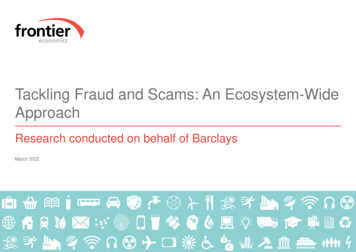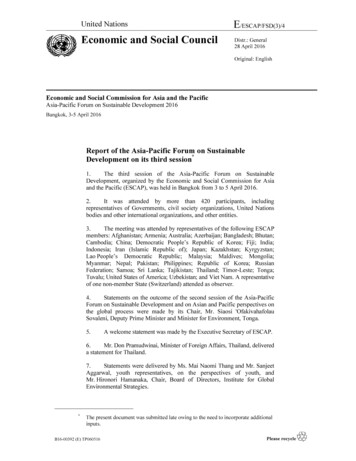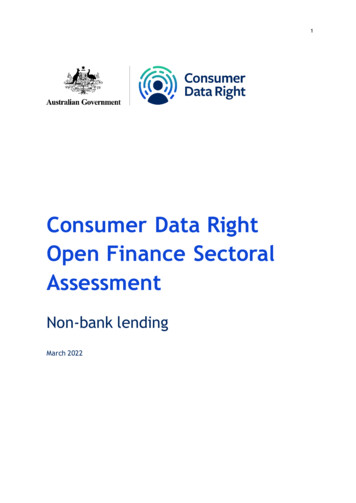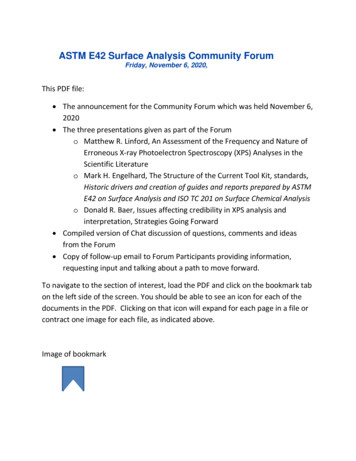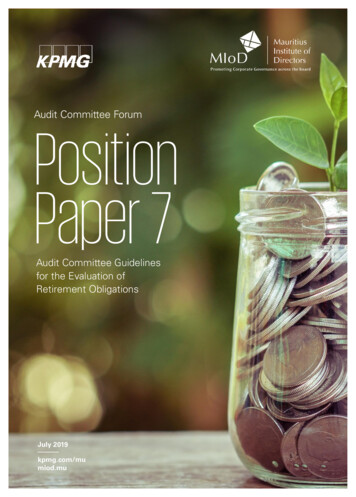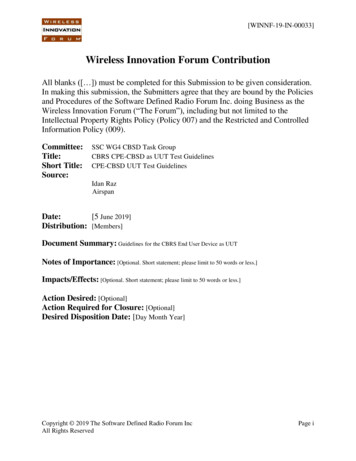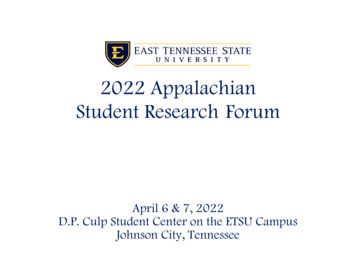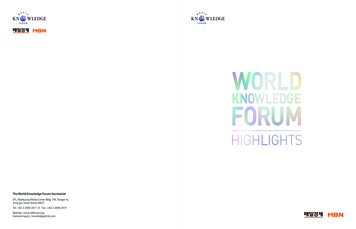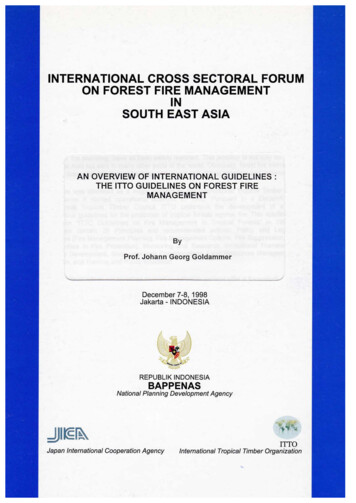
Transcription
INTERNATIONAL CROSS SECTORAL FORUMON FOREST FIRE MANAGEMENTINSOUTH EAST ASIAAN OVERVIEW OF INTERNATIONAL GUIDELINES :THE ITTO GUIDELINES ON FOREST FIREMANAGEMENTByProf. Johann Georg GoldammerDecember 7-8, 1998Jakarta - INDONESIAREPUBLIK INDONESIABAPPENASNational Planning Development Agencyzt;'ni-JJrffirMJapan I nternational Cooperation Agency'':i-ITTOInternational Tropical Timber Organization
AN OVERVIEW OF INTERNATIONAL GUIDELINESTHE ITTO GUIDELINES ON FOREST FIREMANAGEMENTByProf. Johann Georg Goldammer:
Johann G. Goldammerlntemational Tropical Timber Organization (ITTO) andGlobal Fire Monitoring Center (GFMC)@ Fire Ecology Research GroupMax Planck lnstitute for Chemistryc/o FreiburgD-7 908 5U niversityF re ib u rg, G ERM ANY
1.lntroductionln the recent 20 years forest fires influenced by climate variability and rapid demographicchanges have become a major problem adversely affecting the sustainable management oftropical forests. Hazards to human health, the destruction of valuable forest resources andbiodiversity, accidents and difficulties for land, water and air transportation, the disruption tothe lives and livelihood of millions of people and the far-reaching negative impact to severalsectors of the economy, have all been widely reported. This problem is not only confined toSoutheast Asia but also in many other parts of the world. Obviously, forest fire managementis a new dimension which must be accorded urgent and utmost attention and vigilance.Forest fire was identified as a major problem by the lnternational Tropical Timber Council(ITTC) since it started operational activities in 1986. Pursuant to a Decision of thelnternational Tropical 'Timber Council, ITTO undertook the development of a set ofinternational guidelines for the protection of tropical forests against fire. This resulted in thepublication "ITTO Guidelines on Fire Management in Tropical Forests" in 1996. TheGuidelines contain 29 Principles and recommended: actions: Policy and Legislation,Strategies (Fire Management Planning, Fire Management Options, Fire Suppression, Role ofCommunities in Fire Protection), Monitoring and Research, lnstitutional Framework andCapacity Development, Socio-economic Considerations, Land Resources Management andUtilization, and Training and Public Education.The guidelines which are targeting tropical countries in general offer a framework of criteriafor the development of national guidelines which need to be fine-tuned and more specific inaccordance with the socio-economic, cultural and vegetation conditions. Based on the ITTOguidelines, a specific national project has been developed in lndonesia ("lntegrated ForestFire Management in lndonesia: Phase I - National Guidelines on Forest Protection AgainstFire"), while a similar initiative is at an early stage of preparation in Namibia.At the recent consultation on "Public Policies Affecting Forest Fires" by the Food andAgriculture Organization of the United Nations (FAO) it has been suggested thatequal/comparable guidelines for other regions of the world (boreal, temperate areas) bedeveloped with reference to ITTO guidelines. The ITTO is now enhancing cooperation withseveral regional, international and UN organizations and agencies, notably ASEAN, FAO,the World Health Organization (WHO), ADB and World Bank to jointly develop fire policy andmanagement capabilities and strengthen the local capabilities. lnputs from the fire sciencecommunity and the Global Fire Monitoring Center (GFMC) ensure that guidingrecommendations and technical projects are based on updated state of research anddevelopment.
2.2.1Activities of the ITTO in Forest Fire ManagementFire Inventory of the 1982-83 Fire Episode in lndonesiaForest fire was identified as a major problem by the lnternational Tropical TimberCouncil (lTfC) since it started operational activities in 1986. lndeed a smallmission was undertaken in 1987 to lndonesia to examine the extent andecological and economic consequences of the fires of 1982-83 which burnedmore than 5 million ha on the lndonesian and Malaysian territories of Borneo.The findings of the project revealed that on the mapped study area of 4.7 millionha the total burned area was 3.2 million ha (thereof rain forest damaged by fire.2.7 million ha). The loss of timber values amounted to ca. US 8.3 billion, andthe total loss of timber and non-timber values and rehabilitation costs wasestimated at US 9.075 billion. The project is summarized by Schindele (1989)and Goldammer et al. (1996); seb also complete list reports in the list of ITTOreferences.2.2'Rehabilitation of Fire-Damaged Dipterocarp ForestsAs a consequence of the fire inventory of 1988-89 a project entitled TheEstablishment of a Demonstration Plot for Rehabilitation of ForesfsAffected by Fire in East Kalimantan (PD 84/90 [F]] was initiated in 1992 inSamboja, East Kalimantan in co-operation with a local research institution underthe Ministry of Forestry. The project aimed at developing a methodology forrehabilitating forest areas damaged by fire, study its natural succession, andestablish a demonstration area for research and training purposes. The project'soutputs include:.*Detailed experimental design of forest inventory for areas affected byfire and related classification of degree of degradation;.*Technical Guidelines on proposedsilvicultural options for rehabilitatingsuch forests devastated by fire depending upon degree of degradation;.*Detailed growthand yield data of the stands after various silviculturaltreatments; and
.*Systematic analysis of volumes and distribution of natuial and plantedspecies in the forest areas affected by fire.ln continuation of this ITTO project which was finalized in 1994 the project"Promotion of Sustainable Forest Management Systems in East Kalimantan"(SFMP) - a cooperation between the lndonesian Ministry of Forestry and EstateCrops and Germany (through the German Agency for Technical Cooperation GTZ) launched a special component addressing the problem of rehabilitation offire-damaged forests (von Gemmingen 1998). The purpose of this newcomponent of SFMP is on a pilot basis, to assist forest enterprises (private andstate-owned), and local people to implement the necessary steps to rehabilitatefire-affected forests and to integrate them into their management systems. lnaddition to this, applied technology is being further developed in selected fieldsas well as with the Forest Research lnstitute of Samarinda (FRIS) in ademonstration plot for future dissemination.The continuation of the ITTO project through joint German-lndonesiansponsorship demonstrates the ability of various agencies and internationaldonors to collaborate and to add sustainable values to tropical forest protectionprojects.2.3lntegrated Forest Fire Management Project in lndonesialn January 1992, lTfO conducted a consultative mission to lndonesia to identifypriorities and initiate an integrated forest fire management system. The resultingproject lntegrated Foresf Fire Management in lndonesia: Phase I -- NationalGuidelines on Forest Protection Against FrTe (PD 12193 Rev.3 [F]), iscurrently being implemented in collaboration with the Directorate General ofForest Protection and Nature Conservation of the Ministry of Forestry and theBogor Agricultural University. The project co-financed by the ITTO and theCommon Fund for Commodities has engaged local and international consultantsto develop a draft of national Guidelines on integrated forest fire management. lnthe process it involved inten§ive consultations among the national institutionsinvolved and two internationalworkshops. The first workshop was held in B and 9December 1997 in Bogor (ITTO 1998), while the second workshop will beconvened in March 1999.
The project also reviewed and developed the following draft publications:.*Appropriate mission and organizational structure of central forest firemanagement organization.*A fire incident monitoring and reporting system.*A national network for communication on forest fire*National standard on forest fire equipment"Anational forestfire prevention education programme withtheinvolvement of local people*A national and regional coordination guide to prevent and suppressforest fire involving related agencies and local peopleln addition, reports on the following issues are under preparation:.*Social-economic aspects of forest fiie.*Traditional shifting cuttivation system."Rehabilitation of forests degraded by fireThe National Guidelines for lndonesia are expected to be finalized in early 1999.2.4ITTO Guidelines on Fire Management in Tropical Foreststo a Decision of the lnternational Tropical Timber Council, ITTOundertook the development of a set of international guidelines for the protectionof tropical forests against fire. This resulted in the publication ITTO Guidelineson Fire Management in Tropical Forests in 1996 (ITTO 1997a,b). TheGuidelines contain 29 Principles and recommended actions: Policy andLegislation, Strategies (Fire Management Planning, Fire Management Options,Fire Suppression, Role of Communities in Fire Protection), Monitoring andResearch, lnstitutional Framework and Capacity Development, Socio-economicConsiderations, Land Resources Management and Utilization, and Training andPublic Education.PursuantThe synthesis of the ITTO Guidelines is as follows.
2.4.1 ScopeSince the very beginning it was recognized that these Guidelines wouldhave to address a wider range of issues than just the suppression ofwildfires in tropical forests. The guidelines were subsequently "upgraded"to address issues at a fire management level rather than protection only.This improvement has increased the value of its contents.The Guidelines target tropical timber producing countries which havedecided to develop fire management programmes but have littleexperience in this area. To this end, the global community will benefit fromthe success of such efforts.It must be understood that all of the recommended actions listed in theseGuidelines will not necessarily be implemented in any one country. Somemay be very necessary in some countries, whilst unnecessary and/orimpossible to implement in others.The ability of any given country to finance a recommended action was nota consideration in preparing these guidelines. lf an action was deemed tobe necessary to accomplish a goal, it was presented with theunderstanding that it might be beyond the present means of somecountries. Other countries may have that same problem, and have thefinancial means to implement the recommended actions. Vi/hile proposingthe necessary measures and actions, it is hoped that other, more affluentcountries, could be brought into the effort to help fund such necessaryactions.The Guidelines contain 29 principles, with each principle containing severalrelevant recommended actions. Eight appendices were included in theGuidelines.2.4.2 Policy and LegislationBroad-based support from all sectors of society is the main issueconcerning policy and legislation. Given that in most tropical timberproducing countries, the government assumes a major role in establishingthe framework within which a fire management programme would have tooperate, the emphasis of the Guidelines was directed towards encouraginggovernments to develop the necessary policies and legislation for §'uch aprogramme to work. The Guidelines are based on the concept that, whenestablishing such a programme, persuasron is often more effective thanlegislation
The principles and recommended actions presented in this chapter arebased on the concept that the resources to be protected are important toall segments of society, and that the population will readily support therequired sacrifices which may be necessary.2.4.3 StrategiesThis section provides the foundation for the Guidelines, becauseitaddresses the four main components of ä fire management programme:."Fire Management Planning,."Fire Management Options,."Fire Suppression, and."The Role of Communities in Fire Protection.The principles and recommended actions which accompany them, form thebasis for the success of any f,orest fire management programme. lt is inperforming these tasks that the timber producing countries will have tomeet the challenge. lf this portiqn is not carried out appropriately, the entireprogramme could be at risk of failure.2.4.4 Monitoring and ResearchThis chapter of the Guidelines recognizes the fact that a great deal ofinformation is needed before a fire management programme can beestablished. This information will involve items such as a history of fires,weather variables, fuel modeling, and other data which are unique to thecountry in which the programme is being developed. Development ofmodels to evaluate damage and losses of burnt areas are also importantfor establishing fire management programmes.The proposed recommended actions can be implemented withthecooperation of the global community. Much of the work has already beencarried out elsewhere, especially in developed countries; it simply needs tobe modified or adapted to the conditions of the countries involved.
2.4.5 lnstitutional Framework and Capacity DevelopmentFour principles and a large number of recommended actions are containedin this chapter. This indicates the importance of building a stable foundationupon which to base a fire management programme. The chapter is dividedinto two sections.A.Institutional Development.A fire management programme cannot exist without'theinstitutional structure with which to carry it out. The governmentsof tropical timber producing nations must establish, staff, and fundthe agencies through which they will implement fire managementprogrammes. These agencies must be directed to cooperate andfunction throughout the entire realm of human interaction, from thetop government agencies to the smallest communities. Althoughthe establishment of this structure will be from the top down, itsoperation must begin at the community level and progressupwards; andB. Funding and lmplementatiön.This is an important issue for almost every nation that has tropicalforests. Funding for a fire management programme should be highon the priority list. The financial resources of many producernations are already strained to meet other challenges, and theaddition of a fire management programme, no matter howimportant, may stretch those resources to a breaking point.Because the protection of the tropical forests is an internationalissue, it is proper to ask that other countries, including those faraway from the tropics to cooperate in such efforts.2.4.6 Socio-Economic ConsiderationsThis Chapter is based on the fact that any programme must meet theneeds of people in at least two major areas: their need for financialsecurity, and the security they have grown to expect form their customarylife-styles.
Two principles are directed at identifying the need to point out the financialdamage resulting from wildfires, and in showing how the prevention ofthese fires can improve everyone's quality of life. Any economic evaluationof the proposed actions must address both the costs of the programme andtheir benefits. ldeally, the benefits will outweigh the costs, and the course isclear. ln the case of fire management programmes, however, where thecosts are fairly easy to tally, the benefits are sometimes difficult to identifyproperly. This seems to be true even for some of the most valuablebenefits. Care must be taken to identify those beneflts clearly, otheru,risethe more easily identifiable costs will heavily influence decisions.Another two principles address the fact that in many instances, cultural,religious, and traditional values often outweigh financial reasons for dealingwith wildfires, and that these same values tend to complicate the solutions.The recommended actions suggest ways of exploiting these values to theadvantage of the fire management programmes. Emphasis is placed onconsulting with local leaders and women in a community in order to obtaintheir perspectives on the problem.2.4.7 Land Resources Management and UtilizationTwo major forces are at ,work in tropical forests that affectfiremanagement. These are forest management (including the management ofother land-based resources), and forest utilization. Methods used in eachof these disciplines strongly affect on how a fire management programmeis designed and carried out. ln addition to these categories, we recognizethat there are long-standing, and other more recently developed "otheruses", to which tropical forests are subjected to. lt is also important toremember that savannas and grasslands are important ecosystems,usually interrelated with forest lands, and therefore a fire management planmust take them on consideration.2.4.8 Training and Public EducationThis chapter addresses the fact that, for any programme to work, there area number of people who will have to be trained and informed about thepurpose and process of the programme. ln the case of a fire managementprogramme, this includes the managers of the various activities in theforest, as well as the communities in the area. Emphasis should be given toenvironmental education at primary and secondary school levels.10
3.Recent lnitiativesln May 1998, the ITTC adopted a decision to undertake additional initiatives including thedispatch of Missions to affected countries and also to convene a technical consultation at theearliest opportunity in cooperation with all relevant international and national organizations,non-governmental organizations and individual experts. An expert mission was undertakenfrom 9 to 15 September 1998 in lndonesia and from 16 to 19 September 1998 in Sarawak,Malaysia. The mission report by Chandrasekharan (1998) recommends the followingactivities by the ITTO:.*Assistance for preparing national forest fire plan."Rehabilitation planning for fire affected forest areas.*Pilot demonstration and practicaltraining in forest fire management."Community participation in forest fire management."Manuals covering aspects of forest fire management (for ASEAN countries).*Support for selected components of capacity building.*lntegrated Forest Fire Management for eastern lndonesia (Maluku, lrianJaya)."Expand into the scope of model forest management in Sarawak to include FFM.*Supportto and collaboration with national, regional and global initiatives ontechnology development, and building strategic partnerships with relevantagencies.The mission concluded:The land and forest fires that ravaged large areas of Sumatra andKalimantan in 1997 and East Kalimantan in 1998 have added newurgency to the issue of forest fire prevention and management.The emergency caused by the forest fires, and the associatedtransboundary haze problem, are now over. The damages andnegative impacts caused by the fire events are considerable and
their scars remain. lnvestigations carried out so far on relevantcauses, consequences and constraints provide reasonable insightinto the serious lapses of the past and the potential fire threatslooming over the future. Actions are urgently required to avoidfurther recurrence of the devastation from forest fires, and also thecomplacency and lack of compliance as in the past, There isconsiderable interest to address the situation on the part ofinternational community, which need to be channelled in acoordinated manner; and new assistance needs to be sought forbridging vital gaps. ITTO should play its mandated role to provide:needed support.Furthermore it was planned that ITTO, in cooperation with JICA and other interestedbodies, convene this "lnternational Cross-Sectoral Forum on South-East Asia ForestFire Management" with the following scope:.*Examine the report by the Mission undertakenfocusing on:in lndonesia and Malaysia.-the extent and causes of forest fires during 1997-1998, and.-national and international initiatives being undertaken;*Assess various measures on prevention, detection, fire-fighting and remedialmeasures;.*Discuss training needs and publiceducation campaigns;.*Assess the applicability of the ITTO Guidelineson Fire Management in TropicalForest and other relevant initiatives; and."Develop a draft ASEAN lntegrated Action Plan for Forest Fire Prevention andManagement.
4.Collaboration with other lnternational lnitiativesThe ITTO acknowledges and is appreciative of the work being undertaken by variousorganizations and bodies in forest fire management; prevention, detection, fire-fighting andremedial measures. WHO, UNEP, FAO, and the World Bank, among others, are undertakingsimilar initiatives. The lT-fO seeks to fully work together and cooperate with theseorganizations including national and non-governmental organization in the field of forest firemanagement to ensure the conservation, management and sustainable development oftropicalforests. The main international activities are described briefly in the following:As a consequence of the 1997-98 events several international initiatives were taken by theUN and other institutions. One of the major issues was the problem of human health affectedby smoke from vegetation fires. The World Health Organization (WHO) reacted immediatelyby calling for an international expert team to write the WHO Health Guidelines on EpisodicVegetation Fire Events (Schwela 1998). At the time of writing this paper these guidelinesare still being finalized (publication expected in early 1999). The guidelines summarize thestate of knowledge on the effects of air pollution from vegetation burning on human healthand safety.4.1Envisaged Activities of the FAOln October 1998 an expert consultation on Public Policies Affecting ForestFires was convened by the Food and Agriculture Organization of the UnitedNations (FAO). Based on five reports which analyzed the role of public policieson fire occurrence and fire management in the regions Asia-Pacific, Europe andtemperate-boreal Asia, Africa, the Americas, and the Mediterranean theobjectives of the consultation were to.*identify, analyze and discuss the public policies which contribute toforest fires."collate information from institutions dealing with forest fires.*produce recommendations on planning and policies for fire prevention,control, mitigation, rehabilitation measures.*providea strong message to member countries through FAO (asneutral forum) on policy issues related to flre13
."suggest actions to be taken by countries through a statement to theforestry ministers who will meet in Rome in March 1999.Conclusions of the expert consultation on "Public Policies Affecting Forest Fire"The present situation of national policy development in response to wildfires andland-use flres is often of ad hoc reaction to a situation that has alreadydeveloped, rather than proactive mitigation before the emergency arises.Frequently policy development does not consider the underlying causes of fireincidence and spread which may lie outside the forest sector, such as ruralpoverty and deprivation, or the effects of other public policies related to land useand incentives. Sometimes forest fire incidence and spread may be caused byill-conceived forest management policies, in particular policies of total fireexclusion that have led to fuel accumulation and catastrophic fire outbreaks.ln general, land-use policy development is seldom based on reliable data orinformation on the implications of forest fire extent or causes, nor has it involvedconsultative or participatory processes with those most closely involved andaffected. Even where policies linked to reducing the incidence and damage offorest fires are in place, there may be institutional weaknesses that do not allowthem to be enforced, arising from shortage of public funding due to politicalinstability or economic weaknessesPreliminary action needed to develop public policies related to fire managementand sustainable land use practicesThere is a need for reliable and up to date systems for national, regional andglobal fire reporting, analysis and storage of data. Such data, and information onfire causes and socio-economic and environmental effects, are required as asound basis for policy making. Linked to these is the requirement for internationalagreement on terms and definitions as a basis for information-sharing andcommunication.lnformation on resource management alternatives and their consequences isessential for involvement of all stakeholders in policy formulation anddevelopment.Conclusions and recommendations to member countries regarding theprinciples for policies for sustainable land or forest use related to thereduction, mitigation and control of wildfires and the use of prescribedfiresNo single formula can cover the wide range of ecological, socio-economic, andcultural conditions that exist between and within regions, nor the different14
objectives that different societies will decide. But there exist certain broadprinciples common to all situations and objectives, which include the following. *The formulation ofnational and regional policies specificallyaddressing forest flres, as an integral component of land-use policies,where they previously did not exist.*Flexibility in policy implementation, and the capability to review andrevise fire-related policies*Clear and measurable policy objectives and implementation strategiesare needed to minimise the many adverse effects of uncontrolled firesand to maximise the benefits from fire prevention, or from the controlleduse of fire. Such objectives and implementation strategies wouldprovide for sustainable land use practices, compatible inter-sectoralpolicies, joint fire management responsibilities at the community level,and the participation of the private sector and NGOs.*lnvolvementof allstakeholders in policy development, especiallythrough devolved or community forestry approaches. Recognition bydecision-makers that sustainable land management may in manyinstances only be attained through devolution of control of forestresources and the involvement of the communities adjacent to or withinforest in all aspects of management and fire protection. Such devolvedapproaches will require the revision of existing policies and laws andintroduction of appropriate land-tenure arrangements to provideincentives for equitable local/community based participation in forestmanagement and fire protection and control."A favourable policy environment must be created for all aspects ofsystematic flre management (prevention, detection, suppression,prescribed fire, post-fire rehabilitation etc.) and for an appropriatebalance between prevention, suppression and prescribed fire use,based on local conditions. Such an environment should attempt toquantify the monetary and non-market values in order to emphasise thecosts and benefits to society and to decision-makers.*Policies are required for other forms of land-use, in particular creditpolicies should encourage land-use options that do not further15
.:*Policies that tend to increase forest fires must consider public healtheffects. Policies concerned with maintaining the health of ecosystemsthat are fire-adapted may have to balance public health and foresthealth issues.Land-use policies may have to consider the need for appropriate incentives andsubsidies to promote fire prevention.Some technical aspects may support policy formulation andThey include:implementation.I.jISystematic or lntegrated Fire Management."devote more human and financial resources on fire prevention than atpresent in order to reduce the subsequent need and expense for firesuppression;.*policies should promote and regulate prescribed fire for a variety ofland management purposes, including the reduction of hazardous fuels,anQ should promote public understanding of the purposes-of prescribedburning;."policies should define the process whereby fire management plans aredeveloped to achieve the resource management objectives ofconservation units;."develop educational, efension, and public awareness programmes onfire in general and on policy-related matters in particular, appropriate tothe needs of various stakeholders;."vigorous training programmes in all aspects of fire management and atall levels including volunteer community fire-fighting brigades and thetraining of farmers insafe fire use;.*integration of fire management planning with inter-sectoral resourceplanning,.16*encourage silvicultural practices that sustain healthywhich in turn reduce the impacts of fires;ecosystems*develop policies for a fire command structure that clearly delineatesauthorities and responsibilities of the various agencies involved;I!
.Ii*considering the threat from fires burning in radioactively contaminatedvegetation a special fire management programme must be developedfor the radioactively contaminated regions in Russia, Ukraine andBelarus with high priority. This would include also careful recording ofdata and experience for any future similar emergency.nstitutional Co-operation*encourage,firemanagement cost-sharing amongallrelevantstakeholders at all levels."develop inter-sectoral co-operation at national and local levels.*develop international agreements that facilitate the exchange ofexpertise."develop capacity building in fire managementRestoration/rehabi Iitation."salvage useable resources following fires;"encourage natural recovery through protection whenever possible forthe purpose of maintaining genetic integrity;*undertake re-stocking where necessary;.*restore the infrastructure and rehabilitate local communities.Tech nology/Research/l nformationNew technologies offer the means to introduce new and more environmentallyand socially acceptable land use management policies; parlicular attention isdrawn to "zero-burning" land clearing techniques.ItFire research at national and regional levels needs to be strengthened in order tosupport development of fire policies and fire management capabilities, especiallyrelated to inve
ON FOREST FIRE MANAGEMENT IN SOUTH EAST ASIA AN OVERVIEW OF INTERNATIONAL GUIDELINES : THE ITTO GUIDELINES ON FOREST FIRE MANAGEMENT By Prof. Johann Georg Goldammer December 7-8, 1998 Jakarta - INDONESIA JJrffirM zt;'ni- '':i-ITTO Japan I nternational Cooperation Agency I nternational Tropical Timber Organization REPUBLIK INDONESIA BAPPENAS
